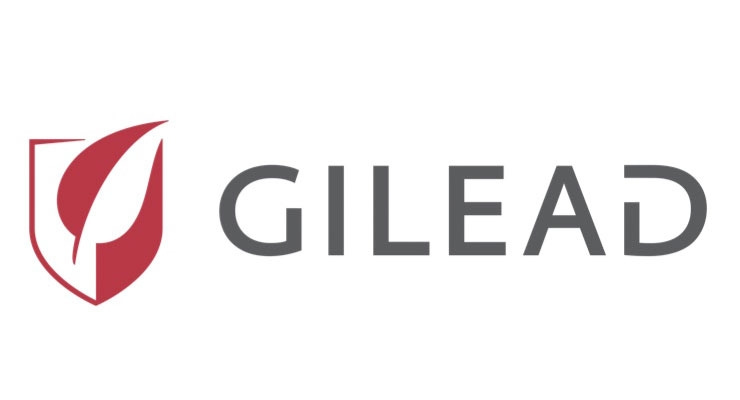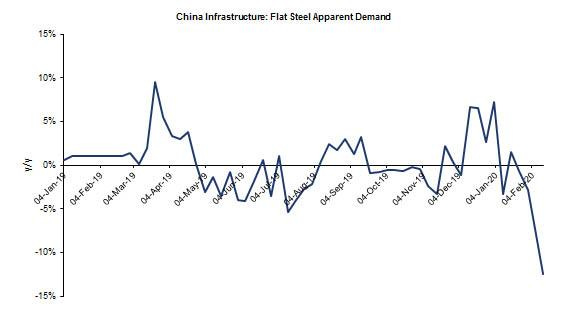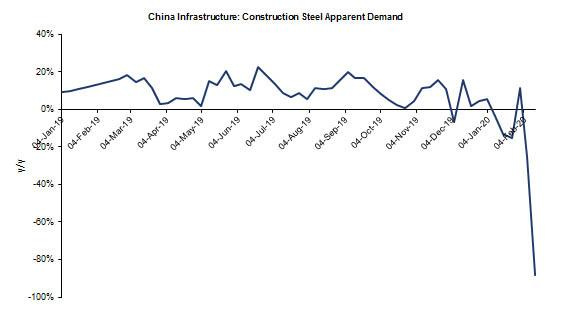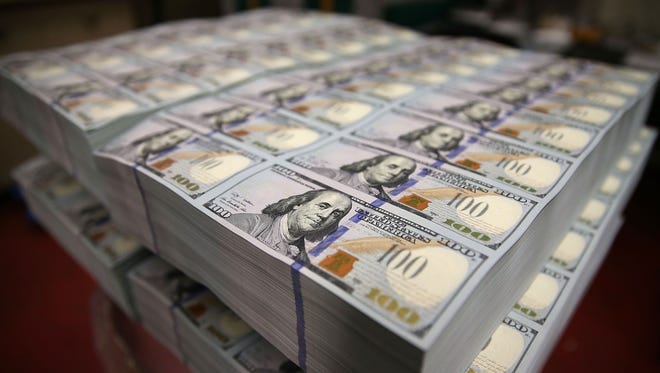Crimes Against Humanity: Entry 2, Article 3
Bringing forth the full Moonshine catalog of COVID-19 articles drawing back to early February 2020 from the first article to the last
If you are new or unfamiliar with Political Moonshine, please take a moment to read this brief but important introduction to the work and the author. It provides imperative background context to the full COVID-19 catalog exceeding 315 articles.
In this series, you’re going step-by-step with the fraud investigator to build the case as originally done.
ARTICLE 3:
Article three expands on the first two with a closer look at George Soros, Gilead Sciences, Remdesivir, pharmaceutical patents, patent sharing agreements, China, the origins of a suspicious viral outbreak, The Sisters of Providence, Providence Regional Medical Center and more.
It’s important to note that at the time the article was written, the damage to the nation and economy were unknowns, the outbreak in the U.S. was minimal and the “pandemic” was far from being declared a “pandemic” [still a month away.]
ARTICLE 3 / 15 Feb 20:
CORONAVIRUS – CUI BONO? NOT CHINA AND THAT IS NO ACCIDENT
Confirmations, legitimate questions and nebulous entanglements germane to an instant epidemic centered on a virus with a questionable genesis.
The ultimate question in all of this is a simple one but it can also serve as a vector through which many perplexing questions can begin to be answered – Cui bono? Or, in conventional terms, who benefits?
Initially, in THIS article, we established that there was more to the mysterious coronavirus outbreak than we were being told. In the article, I outlined the lineage from the apparent first successful treatment in a Washington state medical clinic whereby the treatment – a prescription anti-viral medication called Remdesivir – can be traced back to a financially struggling Gilead Sciences looking for a financial booster shot, a George Soros funded entity called Unitaid and the effort to establish patent-sharing operations in China as predicated on royalties being paid back to Gilead (and perhaps other big pharma companies.)
That piece was followed-up by THIS article and the outline therein, which is admittedly veneer level work; but which paints a compelling picture. Consider:
Over the years, the company has specialized in the research and development of both anti-cancer and anti-viral treatments. It transitioned out of anti-cancer assets in 2002.
Donald Rumsfeld was recruited to the board in 1988 and the company envelops a number of politicians and governmental figures from both sides of the aisle and with deep Harvard roots.
Gilead debuted on the NASDAQ in January of 1992 and to the tune of $86.26 billion.
Rumsfeld was appointed chairman in 1997 before leaving to become Secretary of Defense in 2001.
By 2017, Gilead’s strong history of growth, performance and acquisitions had lost some of its luster and they needed new products to maintain profitability. Consider, “As of 2017, Gilead’s challenge is to develop or acquire new blockbuster drugs before its current revenue-producers wane or their patent protection expires.”
Notice how the need ties directly to patents as outlined in the first article, which specifically pertained to patent pools? That’s important to remember when considering problem/solution scenarios.
Gilead’s struggles were enmeshed in pricing controversies and ultimately tied to poor management that also funneled money into their own pockets, “To begin with, the evidence that Gilead itself uses its profits to “innovate” is thin at best. In 2016, the company reported profit of $13.5 billion. It spent $11 billion to repurchase its own shares, and about $2.5 billion on stock dividends. So the buybacks and dividends together came to $13.5 billion, in effect consuming 100% of the company’s profit.” (SOURCE)
Oddly, Soros dumped his entire position in Gilead in the second quarter of 2014. (SOURCE)
He did the same in the second quarter of 2016 and right before shares eventually rose by 45%. (SOURCE)
Also relevant to it all is Gilead’s entanglement with GlaxoSmithKline and of course, when looking at GSK, you must consider the Rothschilds’ ownership in GSK.
Here’s where that leaves us (from the same article),
We have a company in Gilead that intimately ties back to Harvard and the federal government and which specializes in anti-cancer and anti-viral medications; especially HIV. It also ties directly to biological weapons. Moreover, the company is losing patent protections while it simultaneously engaging in patent pools. It’s also working to develop new products while illegally fixing the prices of its current ones; while also lining their own pockets illegitimately. At the same time we also have Unitaid, funded by billionaire investor George Soros, working to expand Gilead’s patent pool operations in China, which just so happens to be experiencing a viral outbreak with 4 anomalous HIV insertions. An outbreak in China whereby a Washington State doctor just used Gilead’s drug Remdesivir to demonstrate the first likely effective treatment. All of this against the backdrop of Soros moving out of his entire Gilead position more than once.
POLITICAL MOONSHINE
All of the preceding is a recapitulation of a pragmatic and logical assessment of a minimum fact set that establishes what appears to be a ‘conspiracy theory’ of great magnitude. Therefore, the MOST IMPORTANT question becomes this – How can the gap separating conspiracy and reality be bridged? Here’s how.
This item HERE bridges that gap. It bridges the gap so strongly that you could transport an entire tank brigade from one side to the other. From that article, which focuses on the fraudulent nature of some viral epidemics in general and not specifically the coronavirus, consider,
THE VIRUS is a fake propaganda idea that has traditionally been used to cover up vast crimes and the destruction of human life in ways that have nothing to do with germs. THE VIRUS is one of the greatest cover stories ever invented. I’ve explained how propaganda about viruses is made to stand in for corporate and government crimes that make people sick and kill them: contaminated water supplies; lack of basic sanitation; giant toxic agricultural farms; industrial poison-pollution; hunger; starvation; protein-calorie malnutrition; fertile farm land stolen from native people by corporations and governments; toxic medical drugs and vaccines; and now, in Wuhan and other Chinese cities, unprecedented mixtures of toxic air pollution, causing lung damage. The basic theme is: DON’T LOOK AT ALL THOSE CRIMES, JUST FOCUS ON THE VIRUS AS THE ONLY PROBLEM. This is sheer invention.
JON RAPPAPORT
Pause for one second – To fully galvanize this premise, it’s highly recommended that folks read Rappaport’s entire short ARTICLE.
It all begs the question – Cui bono?
Does the US economy benefit? I questioned whether or not the US federal government and the US economy in particular would benefit from such a viral epidemic in China. Those are logical questions deserving of answers.
Here are some of those answers as reported HERE by Zero Hedge this morning. Consider these data points and please pay particular attention to the last one being an inverse trend.
Below: apparent demand for flat steel
Below: apparent demand for construction steel
Below: average road congestion in 100 cities
Below: daily passenger traffic
Below: passenger traffic
Below: coal consumption
Below: daily property sales in 30 major cities
Below: food wholesale price index (notice the data trend is inverse)
The broader detrimental economic impact that the coronavirus has had on China’s economy is undeniable.
So then, just who or what benefits from the scenarios above? Respective to the economic damage being incurred by China, does the US federal government benefit? Absolutely. Does the US economy benefit? Absolutely. Do pharmaceutical companies like Gilead Sciences, Glaxo Smith Kline and others benefit? Absolutely.
What do we know about Providence Regional Medical Center Everett? We know this – it is, “Guided by the philosophy of the Sisters of Providence, we live their mission of caring for the poor and vulnerable right here in our community.” THIS also provides more background details on Providence.
What do we know about the Sisters of Providence? The HISTORY of the Sisters of Providence dates back to 1843 and the ministry functions with three primary pillars: ministry, community and spirituality and its work focuses on reaching the most under-served in specific contexts including “Social Justice,” “Reclaiming Earth,” “Women and Children” and “El Salvador;” and with particular interest in climate change, the death penalty and human trafficking. I probably don’t need to point-out that this is no conservative group but rather a feminist activist group rooted in religion and with a long established history, which usually comports with a high degree of entanglement.
We also know that in October 2017 George Soros donated 80% of his wealth to his charity, Open Society Foundations and that, according to the linked NBC article (emphasis mine), “Open Society is a sprawling international group of charities that works in more than 100 countries on projects including refugee relief and public health.” Soros’ global interests in the health sector are substantial.
Quite a bit of digging went into examining a multitude of relationships and money flow between Gilead Sciences, Sisters of Providence, Providence Regional Medical Center Everett, Providence Health and Services, Open Societies Foundation, George Soros, Unitaid, and others and here’s what I got – a lot more work ahead to sort-out all of that. With that said, though, my initial instincts on the patent-sharing angle are bearing fruit because Gilead Sciences stands ready to capitalize on the “outbreak.”
In THIS 06 Feb 20 item from the National Post, we have confirmation of the patent-sharing angle whereby, IF ACCEPTED, the deal on the table would allow the struggling Gilead Sciences to both retain the patent and begin receiving royalties from global marketing rights and the Chinese manufacture and sale of their drug Remdesivir. Consider,
The Wuhan Institute of Virology — based in the Chinese city in the center of the epidemic — has applied for a patent in China for the use of the antiviral drug, known as remdesivir, in treating the ailment. The application was made on Jan. 21 together with a military academy, according to a Feb. 4 statement on the institute’s website.
While Gilead’s experimental drug isn’t licensed or approved anywhere in the world, it is being rushed into trials in China on coronavirus patients after showing early signs of being highly effective. It may go into clinical trials in China as early as next week in patients with moderate and severe symptoms of the pathogen, said Merdad Parsey, Gilead’s chief medical officer.
NATIONAL POST
More from Time Magazine,
A Chinese drugmaker said it has started mass-producing an experimental drug from Gilead Sciences that has the potential to fight the novel coronavirus, as China accelerates its effort to find a treatment for the widening outbreak.
Suzhou-based BrightGene Bio-Medical Technology said in a statement filed to the Shanghai Stock Exchange on Tuesday night that it has developed the technology to synthesize the active pharmaceutical ingredients of remdesivir, Gilead’s drug that is a leading candidate to treat the highly-infectious virus that’s killed more than 1,000 people. The drug isn’t licensed or approved anywhere in the world yet.
Its stock surged 20% in Tuesday morning trading in Shanghai.
TIME MAGAZINE
More of the same from The National Law Review. Consider,
The Wuhan Institute of Virology announced on February 4, 2020 that they applied for a Chinese patent on Gilead’s Remdesivir for treating the novel coronavirus (2019-nCoV) that originated in Wuhan in late 2019. The Chinese patent application was filed on January 21, 2020 and the Institute plans to file internationally via the Patent Cooperation Treaty.
THE NATIONAL LAW REVIEW
The Patent Cooperation Treaty linked above says this,
The Patent Cooperation Treaty (PCT) assists applicants in seeking patent protection internationally for their inventions, helps patent Offices with their patent granting decisions, and facilitates public access to a wealth of technical information relating to those inventions. By filing one international patent application under the PCT, applicants can simultaneously seek protection for an invention in a very large number of countries. Read more about the PCT.
WORLD INTELLECTUAL PROPERTY ORGANIZATION
According to The National Law Review,
Accordingly, as Remdesivir is unavailable in China and chloroquine is, it seems the Institute’s goal is to enable a cross-license with Gilead and so avoid having the Chinese government invoke compulsory licensing under Articles 48- 50 of the Patent Law, which might cause political repercussions with the U.S. in light on the Phase I trade deal.
THE NATIONAL LAW REVIEW
Articles 48-50, as referenced above, read as follows:
Article 48 Under any of the following circumstances, the patent administration department under the State Council may, upon application made by any unit or individual that possesses the conditions for exploitation, grant a compulsory license for exploitation of an invention patent or utility model patent:
(1) When it has been three years since the date the patent right is granted and four years since the date the patent application is submitted, the patentee, without legitimate reasons, fails to have the patent exploited or fully exploited; or
(2) The patentee’s exercise of the patent right is in accordance with law, confirmed as monopoly and its negative impact on competition needs to be eliminated or reduced.Article 49 Where a national emergency or any extraordinary state of affairs occurs, or public interests so require, the patent administration department under the State Council may grant a compulsory license for exploitation of an invention patent or utility model patent.
Article 50 For the benefit of public health, the patent administration department under the State Council may grant a compulsory license for manufacture of the drug, for which a patent right has been obtained, and for its export to the countries or regions that conform to the provisions of the relevant international treaties to which the People’s Republic of China has acceded.
THE NATIONAL LAW REVIEW
In essence, the Chinese are deciding between a “heavy handed” compulsory license and the application for its own patent, which would be predicated on international pharmaceutical companies collaborating with the Chinese government to contain the virus. The Hill says this about compulsory licenses,
If an innovator drug company does not agree to the price the government determines to be “appropriate,” then the bill would allow the secretary to steal the company’s patent through compulsory licensing and allow another manufacturer to make a generic. That is nothing more than government-sanctioned theft.
THE HILL
Here’s what the World Trade Organization says about compulsory licensing,
Compulsory licensing is when a government allows someone else to produce a patented product or process without the consent of the patent owner or plans to use the patent-protected invention itself. It is one of the flexibilities in the field of patent protection included in the WTO’s agreement on intellectual property — the TRIPS (Trade-Related Aspects of Intellectual Property Rights) Agreement.
WORLD TRADE ORGANIZATION
Once the agreement is reached, Gilead Sciences will retain the GLOBAL rights to market the antiviral drug. Recall that George Soros has manipulated his position on Gilead Sciences several times; Soros has invested in Unitaid, which engages in global patent-sharing for pharmaceuticals and seeks to expand patent-sharing in China; Gilead Sciences has fallen from grace and is in need of new products to bolster profits and overcome expiring patents on current products.
So, as we all consider the out-of-nowhere explosion of an epidemic centered on a virus of questionable genesis and all of the nebulous entanglements it presents, again, I ask – Cui bono?
Here’s what Barron’s said on 04 Feb 20, with the premise of the article being a lack of profitability from Gilead’s drug Remdesivir germane to the coronavirus,
Abrahams wrote that it was possible that remdesivir would emerge as an effective treatment for the new coronavirus. Making money off it is another matter. “From a business perspective, we view it as unlikely remdesivir would have a substantially monetizable path,” he wrote.
BARRON’S
The numbers show differently. Consider,
The Wuhan coronavirus proved a boon for shares of the out-of-favor big biotech firm Gilead Sciences, sending shares up 5% on Monday on news that one of the company’s experimental drugs could work to treat the disease.
BARRON’S
Curiously, the Barron’s piece also includes this line, which stands contradictory to the major premise of the article,
Abrahams said Gilead remains a good bet regardless. And he said that the focus on remdesivir could draw attention to the company’s antiviral expertise, which he said is underappreciated.
BARRON’S
If the analysts see Gilead as underappreciated in the antiviral sector, rest assured Gilead’s management also know this. Were they looking for something to escalate interest and spur further investment to bolster profitability? The numbers might suggest that.
Shares of Gilead are up 2.1% this year as of Monday’s close, and down 5.3% over the past 12 months. The company has faced questions from analysts over how it will achieve growth. Gilead has relatively new management and a sizable cash pile.
BARRON’S
Prior to the coronavirus outbreak, Gilead was exploring patent-sharing operations in China and Brazil. Curiously, its own board voted against expanding accordingly and presumably due to big-pharma pressure as those two countries are considered desirable marketplaces.
Now, though, Gilead has managed to position itself so as to hold the patent on a prescription drug (Remdesivir), which now commands GLOBAL DEMAND, at the same time it holds THE RIGHTS TO GLOBAL MARKETING for that drug. And now their profits are up with an advantageous near future.
All of this is converging on the same timeline. Is that an accident? A coincidence? A fluke? Or is it something else?
I wonder if that patent and those marketing rights answer some of those pesky questions about growth and profitability?
Again, I ask, cui bono?
-End-














